 |
||
|
||
| ||
Performance testsTestbed
Benchmarks
Note that performance charts are located on a dedicated page, because they don't fit a reasonable resolution. S.T.A.L.K.E.R.Performance charts: S.T.A.L.K.E.R. 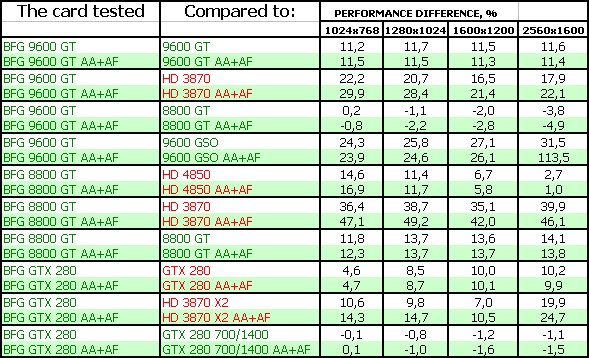 World In ConflictPerformance charts: World In Conflict 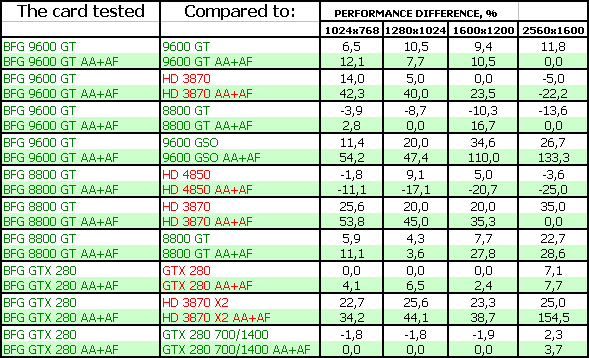 Call Of Juarez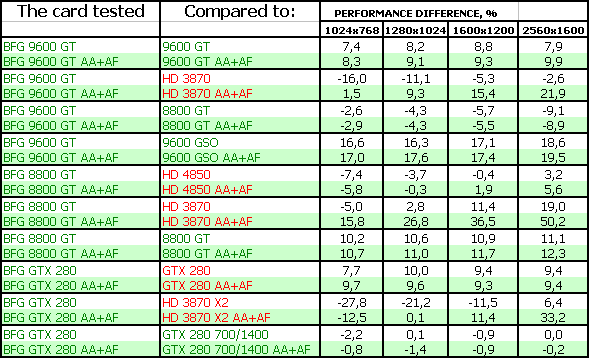 Company Of Heroes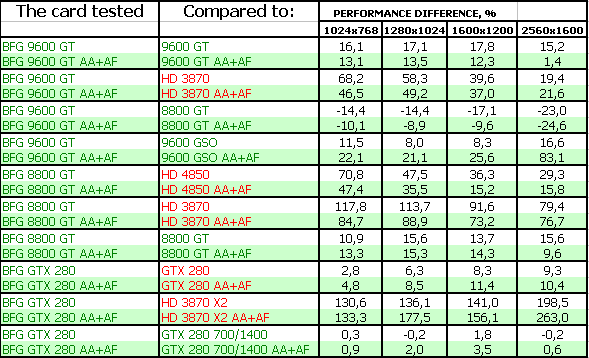 3DMark Vantage: Graphics MARKSPerformance charts: 3DMark Vantage: Graphics MARKS 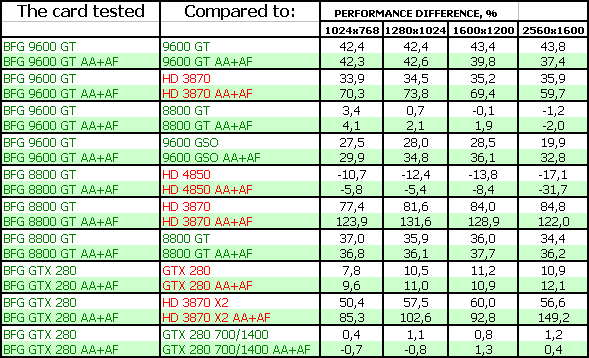 3DMark06: SHADER 2.0 MARKSPerformance charts: 3DMark06 SM2.0 MARKS 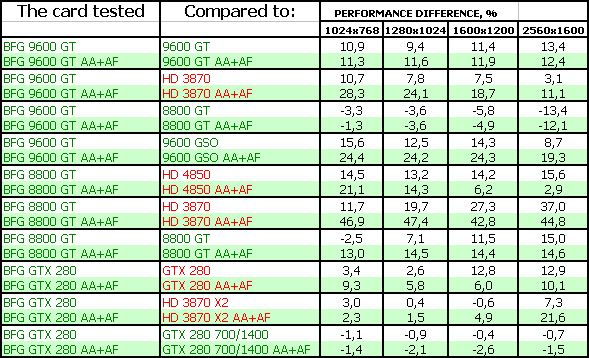 3DMark06: SHADER 3.0 MARKSPerformance charts: 3DMark06 SM3.0 MARKS 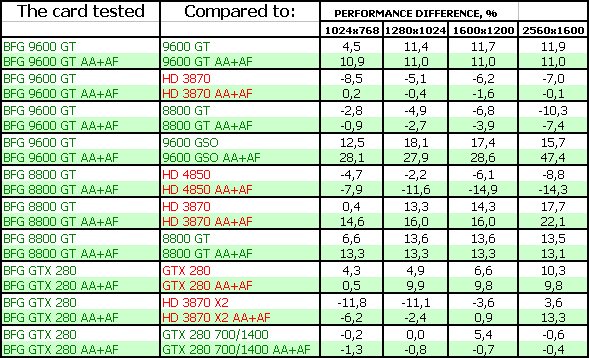 ConclusionsBFG GeForce 8800 GT OCX 512MB is a very interesting product operating at much higher frequencies with a noiseless cooler. Yes, it occupies two slots in PC enclosure, but it's not much of a problem for such a graphics card. It cannot be installed into a barebone anyway, because of weaker PSUs. On the whole, this product performs on a very good level comparing to competitors, except for RADEON HD 4850 that looks a tad better. However, as I have already mentioned, it's all up to you. We haven't tested the custom-colled 4850 cards so far, and this BFG card comes with an excellent cooling system that adds much to the product score. BFG GeForce 9600 GT OCX 512MB is also a very interesting product with a similar cooler. As this card is apparently cheaper than 4850, it's probably the best buy in this price range. Especially considering its raised frequencies and noiseless cooler. BFG GeForce GTX 280 OCX 1024MB is one of the fastest single-GPU graphics card these days. Only its package is not appropriate to its top-end status. On the whole, OCX is a very good series. Company engineers have done a great job, so we could recommend these cards of all 9600 GT and 8800 GT solutions. But as usual, the choice is yours. To find more information about performance of various cards, visit our monthly special i3DSpeed. AfterwordA few words about our benchmarks. In our updated article about FRAPS, we have illustrated how crude and inaccurate tests with this utility are. Testers do not have other tools, except for benchmarks built into games. This article and its first part explain that it's sometimes possible to test games with integrated and identically looped demos. Although this implies lots of potential errors, since measurement accuracy depends on a given tester: whether he starts/stops FRAPS in time or does it too late/early. But I have run across situations, when demo load changes abruptly in the very beginning or end. So a half-second delay in starting/stopping the utility changes the average FPS by 15-20%. That's not a measurement error anymore - such a test is a total waste of time. One time you delay the test, another time you start it too early (not intentionally, of course), and you end up with absolutely different performance results. But even that's not the most important thing. The fact is, there are almost no games with built-in demos anymore. So, testers are forced to use a method that we deem totally unacceptable. They measure gaming performance by walking a straight line from the a starting point in a scene to a selected destination (the nearest fence, tree, etc.). We all understand that it's impossible to navigate to a finish spot in precisely the same route with different cards and in different resolutions. Besides, such games always introduce random elements into a scene, and objects may be placed slightly differently on the same scene. Unfortunately, websites that publish a huge number of tests do not always reveal their test methods for each game (except for those with built-in benchmarks). So, we believe that it's better to offer a limited number of game tests, but each will be crystal clear, accurate and showing actual differences between graphics cards. BFG GeForce 8800 GT OCX 512MB and BFG GeForce 9600 GT OCX 512MB get the Original Design award. 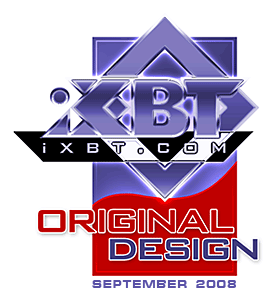 We express gratitude to BFG Russia
for the provided graphics card. PSU provided by TAGAN, Monitor provided by NVIDIA. Write a comment below. No registration needed!
|
Platform · Video · Multimedia · Mobile · Other || About us & Privacy policy · Twitter · Facebook Copyright © Byrds Research & Publishing, Ltd., 1997–2011. All rights reserved. |